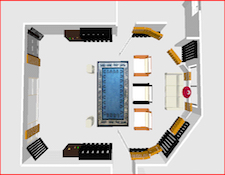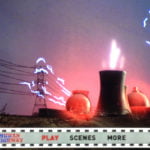It’s the time of year for saving money!
In Part 1 of this new series of articles about how to get the most for your money when shopping for Hi-Fi gear, I reminded you that most of the audio publications (and even some others, like Consumer Reports, that are purely “mainstream” and not focused on audiophiles at all) occasionally publish articles claiming to give you “the inside scoop” on buying Hi-Fi, and that those are usually just lists of the percentages of your buying dollar that you should spend on each element of your new system. I also said that that, IMHO, is the wrong way to go about it, because not all people want their system for the same reason or are looking for it to do the same thing, for the same kind of music, or in the same kind of listening environment or circumstances.
 For one thing, I wrote, not everybody’s tastes and preferences are the same – either in what to listen to or in the way they want it to sound. (Yeah, I know; everybody wants the sound to be “clear”; that’s a given. And everybody wants it to be “natural-sounding”. Except that nobody – because none of us were actually at the original recording session – really knows what that means, and we all have different guesses as to what the “real” sound was like and different ideas of what we’d LIKE it to have been. There are also, I wrote, different kinds of systems, for different purposes, ranging from delivering just background music and the occasional news report all the way up to the most serious attempts at reproducing a true approximation of the concert hall experience.
For one thing, I wrote, not everybody’s tastes and preferences are the same – either in what to listen to or in the way they want it to sound. (Yeah, I know; everybody wants the sound to be “clear”; that’s a given. And everybody wants it to be “natural-sounding”. Except that nobody – because none of us were actually at the original recording session – really knows what that means, and we all have different guesses as to what the “real” sound was like and different ideas of what we’d LIKE it to have been. There are also, I wrote, different kinds of systems, for different purposes, ranging from delivering just background music and the occasional news report all the way up to the most serious attempts at reproducing a true approximation of the concert hall experience.
To simplify things, I set forth just two basic kinds of system; those that, like one for the office or the bedroom, we would likely buy and, as we would with a refrigerator or other home appliance, just keep and use for as long as it lasted (“Keeper” systems.), and those that, as part of our committed audiophile hobby (or, as some might say, “obsession”), we’d likely be constantly changing or improving as our tastes, circumstances, and budget changed or new stuff came along for us to buy.
 In the last article, I started with “keeper” systems and said that the very first things we should do in selecting one was to decide what we wanted it to do for us and where we were going to put it. Notice that I specifically did NOT start with the size of our budget, as so many of those other articles always do: Until you start shopping and find out what things actually cost, how can you possibly know what budget to allow? And until you know what you want your “keeper” system to do and where you’re going to put it, what’s the point of shopping? How are you going to know what to shop for?
In the last article, I started with “keeper” systems and said that the very first things we should do in selecting one was to decide what we wanted it to do for us and where we were going to put it. Notice that I specifically did NOT start with the size of our budget, as so many of those other articles always do: Until you start shopping and find out what things actually cost, how can you possibly know what budget to allow? And until you know what you want your “keeper” system to do and where you’re going to put it, what’s the point of shopping? How are you going to know what to shop for?
Then, as part of the “where to put it” issue, I said that as long as they’re accessible, for changing discs or whatever, location isn’t critical for your electronics, but is VERY important for your speakers, and went on to say that “bookshelf” speakers: 1) may not really FIT into a bookshelf; 2) even if they do fit, they probably shouldn’t be put into a bookshelf, anyway, because they’ll most likely sound better – at least in terms of imaging and soundstaging (things that many very small speakers do superbly) – if they’re placed at ear level for your normal listening position and pulled a couple of feet or more away from the back and side walls.
 If you never expect to do anything approximating critical listening on this system – then your choice simple, DO put your speakers wherever is convenient and looks okay, and leave it at that. If critical listening IS a possibility, though, speaker placement is crucial and, considering that to properly do that with your bookshelf speakers, you’re going to need to pay what could be significantly more money to buy appropriate stands for them and possibly, if your intended room is too small, move them to a different room entirely, maybe you should -especially if you’re a bass lover or like to listen LOUD – consider going to floor-standing speakers instead of the bookshelf units we’ve been talking about.
If you never expect to do anything approximating critical listening on this system – then your choice simple, DO put your speakers wherever is convenient and looks okay, and leave it at that. If critical listening IS a possibility, though, speaker placement is crucial and, considering that to properly do that with your bookshelf speakers, you’re going to need to pay what could be significantly more money to buy appropriate stands for them and possibly, if your intended room is too small, move them to a different room entirely, maybe you should -especially if you’re a bass lover or like to listen LOUD – consider going to floor-standing speakers instead of the bookshelf units we’ve been talking about.
And that finally gets me to the subject matter for this article: If you aren’t going to do critical listening, my recommendation for getting the highest value for your bucks expended might be something as simple as a “personal” component system (you know, those little “mini-stack” component systems that include everything you need, plus their own speakers, for only a very few hundred dollars, or even a Bose “Wave Radio” which sounds perfectly pleasant for about the same price and can give you cd and radio music in just one small “no assembly required” package.
If you DO want to get music of (sort of) serious listening quality, and don’t want to spend very much more for it, there are a surprising number of quite good options for a low-cost “keeper” system: For one thing, the speakers that Andrew Jones has designed for Pioneer and for ELAC are absolutely phenomenal at their price point and can, in some ways, on some music, approach real High End performance. Others, from Emotiva, that I recently heard in Toronto at the TAVES show (Toronto Audio Video Entertainment Show?) were quite impressively good-sounding for only $399 (I forgot to ask if that was U.S. or Canadian funds, but, either way, it’s a bargain) Other speakers that I’ve heard and been mightily impressed by are the Kevin Voecks-designed Concerta series for Revel. These are pricier, but very much worth the added expense.
 Whatever you go with for speakers, it’s likely that the very best value as a “source” for a “keeper” system will be found in a low-priced cd player or streaming device. My personal experience with digital equipment has been such that there are only two things that I would ever recommend to you: either buy the very cheapest piece you can find or the very most expensive piece [within reason] that you can stretch your budget to afford. The cheapest piece will still be very good and will, even at a very low price, give a very high percentage of the performance of higher-priced gear, and the high-price gear will provide the last level of refinement, if that’s what you wish. Other than one those two, I would NEVER buy anything in-between. While noticeably more expensive, it’s doubtful that you’ll notice significantly better sound.
Whatever you go with for speakers, it’s likely that the very best value as a “source” for a “keeper” system will be found in a low-priced cd player or streaming device. My personal experience with digital equipment has been such that there are only two things that I would ever recommend to you: either buy the very cheapest piece you can find or the very most expensive piece [within reason] that you can stretch your budget to afford. The cheapest piece will still be very good and will, even at a very low price, give a very high percentage of the performance of higher-priced gear, and the high-price gear will provide the last level of refinement, if that’s what you wish. Other than one those two, I would NEVER buy anything in-between. While noticeably more expensive, it’s doubtful that you’ll notice significantly better sound.
I’ll have some thoughts on buying the rest of your “keeper” electronics next time, and then go on to how to get the best value in an-ever changing “audiophile” system. For now, though, I’m out of space.
See you next time.








